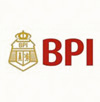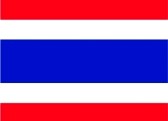All Categories



Treasures of Ukrainian Folk Music. Traditional Songs and Instrumental Music of the Left-Bank of Kyiv Region
Share Tweet
of brand new stock?
or
Need this item ASAP?
Check if this is available on Amazon
or available in other sites
Send us the link so we can buy for you








Treasures of Ukrainian Folk Music. Traditional Features
-
folk music, Ukrainian folk music, Ukrainian music, folk songs, instrumental music, instrumental dance music, world music, eastern European music, folklore
-
russian music, russian folk music, russian chcoir music, russian choral music,
-
ukraine, ukrainians, village music, village band, field recording
-
choral music, choral music sacred, choral hymns
-
medieval music, bizantine chant, ukraine, ukrainian folk songs, ukrainian christmas ukrainian folk music, ukrainian dance music russian folk music, russian folk songs, russian
About Treasures Of Ukrainian Folk Music. Traditional
This album represent musical tradition of Left-bank Ukraine (to the east of the Dnieper), the part of it which it is usually regarded as the west boundaries of historically-ethnographic region of Poltava. The records were made in the villages, situated in the basin of the Supiy river, a tributary of the Dnieper, which are now parts of Zgurovka and Yagotin districts of Kyiv region. The musical folklore of the left-bank Kyiv region was formed under the considerable influence of original historic-social processes that took place here. After the Tartar-Mongolian invasion in the 13th century and further devastation, caused by frequent Tartar raids, the free lands began to populate again little by little. From the middle of the 17th century Yagotin and Basan' Cossack squadrons of Peresliv regiment (military alignments, arisen in the war against Rzeczpospolita) quartered here in a number of villages. After the war - from 1667 - left-bank Ukraine became a part of Russian empire for many years and this affected largely the lexis, the set of musical instruments, the repertoire of songs and dances. The new conditions of historical life pressed ancient 'natural' customs. Therefore archaist layer of musical folklore is rather poor nowadays. Ritual melodies of an agricultural calendar cycle were damaged most of all. Only three samples of songs represent them on the CD. They are - New Year carol (track. 1), that accomplished a Christmas ritual of visiting the peas-ant homesteads, 'kupalska' (track 6), that used to be performed near ritual fire 'Kupaylo' on 'The John's night', and a reaper's song (track 22), which sounded right in a field. In contrast, hymeneal songs remained clear in people's memory. They constitute a considerable part of a repertoire of rural singing circles. Even nowadays we can hear them during rituals 'Korovay' ('The Loaf) (track 3, 29), 'Divych-vechir' (track 20), 'Divuvannia' (track 6, 14). Undoubtedly, the limited scale and so-called 'hukannia' ('exclaiming') preserved in hyme-neal songs until now are backwashes of the pagan archaism, which is more common in the north of Ukraine. Sorrowful hymeneal songs' melodies associated with taking farewell of the bride are filled with a heart-grief (track 3, 7, 13). Lyrical layer of the songs reflects truly the way of life of people of this land. We can hear on the CD the songs of Cossack life (track 2, 22), soldier's songs, that are sang by home-folks during seeing-off to the army (track 9, 28). Strokars'ka (a song of a farm-hand) reflects the hard work of the children far from home, where they were sent for work by their impov-erished parents (track 18). The song 'On Sunday I went to a marketplace' (track 21) sounds like witty parody of church hymns. Lyric songs differ from the ritual group of melodies by the width of the range and character texture. Ornamented solo second part (that is traditionally sang by 'tiaglo' or 'tiagatch' - 'puller') is opposed to 'bass' voices, which often divide into 'thick' and 'thinner' bass (track 5, 8, 24, 26). Together they form polyphonic texture. And it may be considered to be the epicentre of the lyrical tradition of the Poltava region. Slow style of singing with different kinds of ornamentation, chest voice, specific voice vibrato - all these are expressive features of lyric songs of the region. Instrumental music of the region is represented mostly by social dances (track 5, 10, 17, 27). Traditional Ukrainian dances coexisted with the dances of different ethnic origin and until recently they were an integral part of peasants' life. Instrumental ensembles accompanied dances were formed of violin, tambourine, balalaika or accordion. Unfortunately, folk violin art is becoming more and more rare. This CD is an attempt to document the state of traditional music of the region at the end of the 20th century. The musical material has been collected during expeditions in summer 1997. The records were made in the homes of performers on analogue medi



























